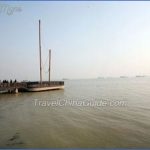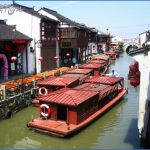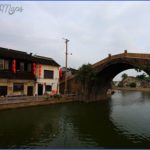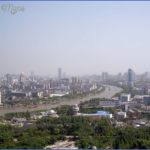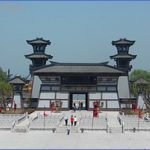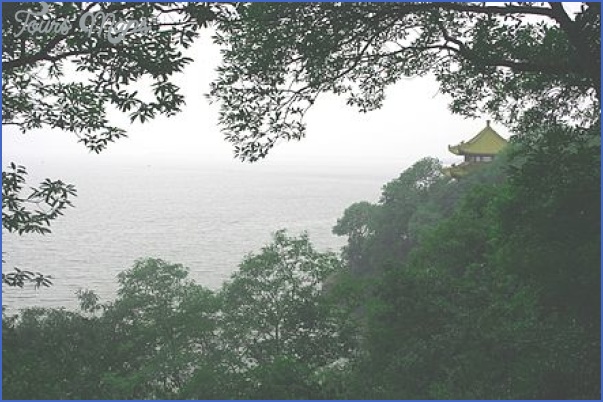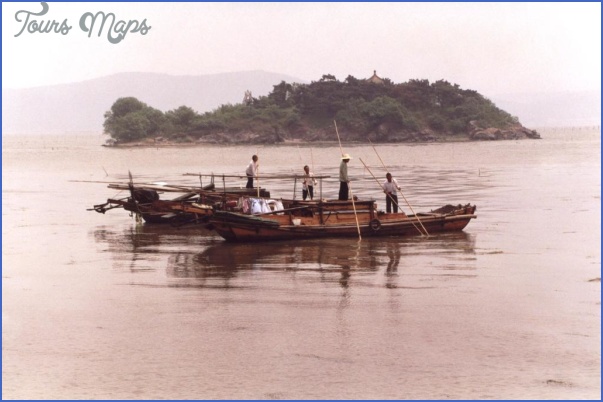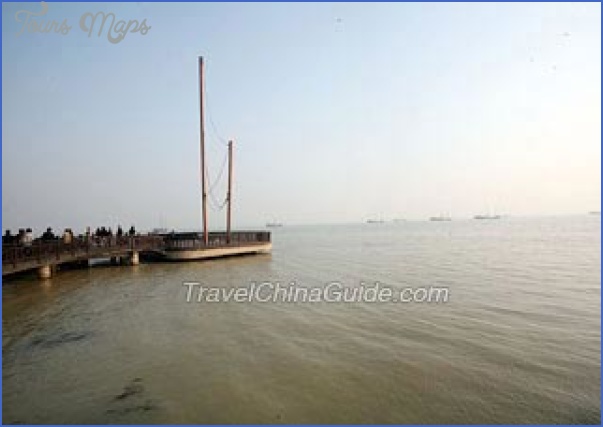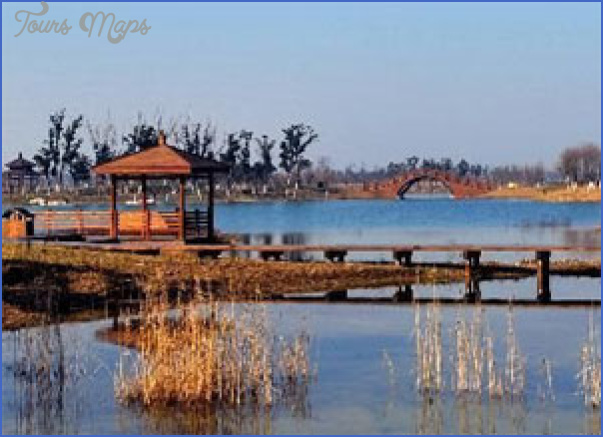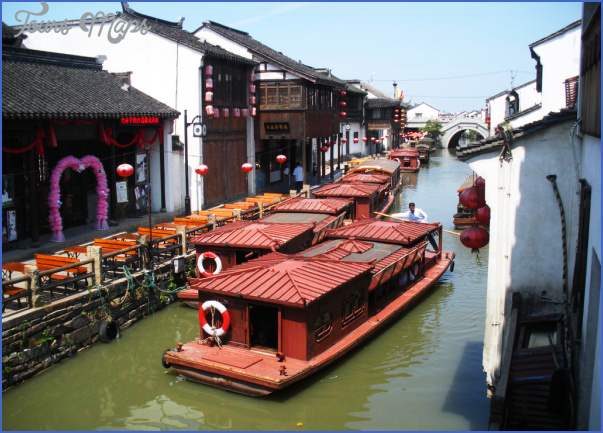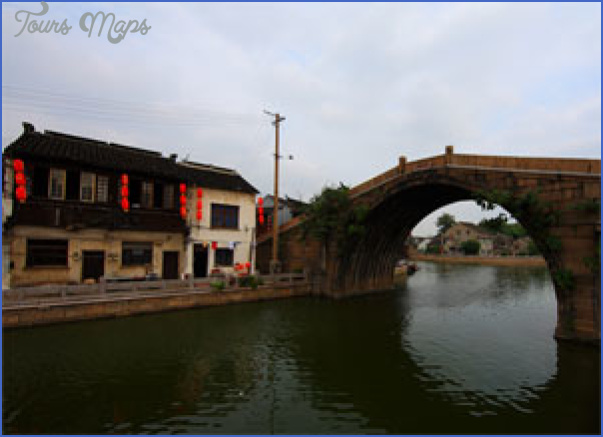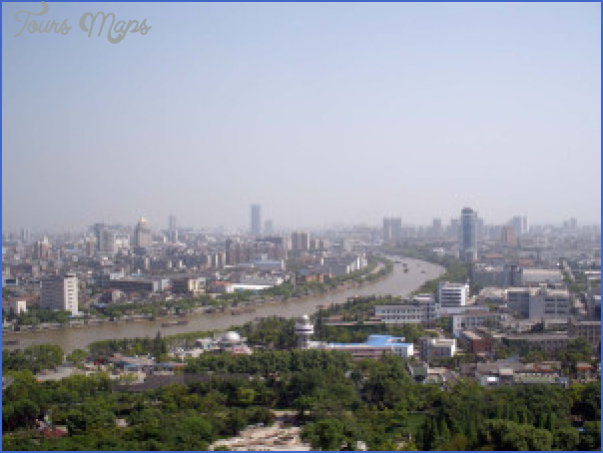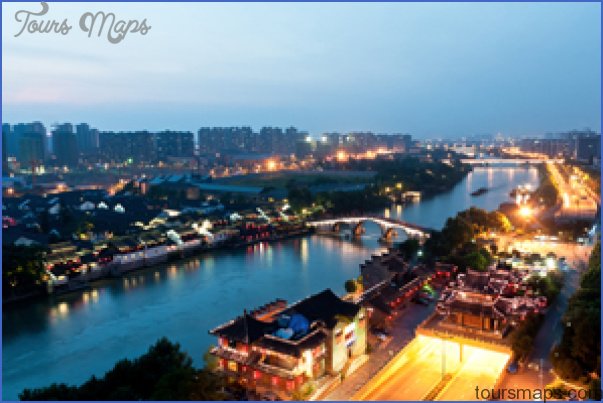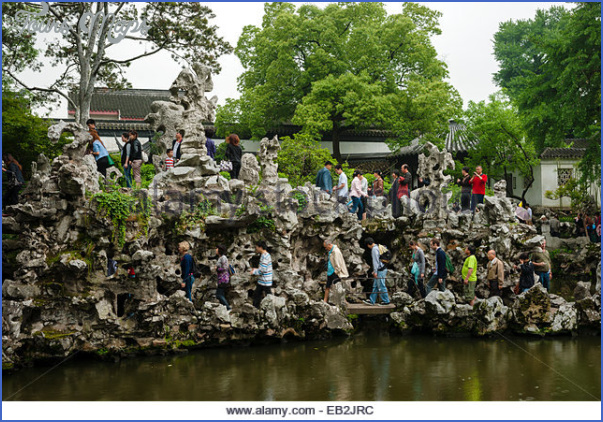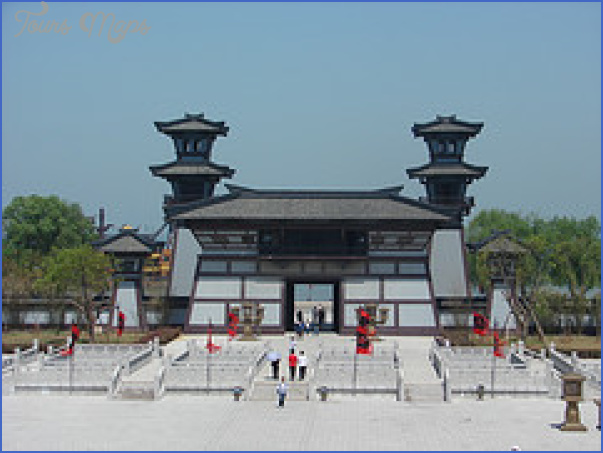One of the highlights of a visit to China isthe83km/52 mile boat trip on the Li River from Guilin to Yangzhuo. The tourist boats travel through lovely karst scenery, passing the many fantastically shaped peaks, some of them wreathed in cloud, arising from a shimmering grey and green fairytale landscape dotted with fishing villages, paddy fields and the occasional grazing water buffalo, while as evening falls you can watch the captive cormorants diving for fish from the lamplit bamboo rafts drifting past.
China’s greatest river, the Yangtze (Changjiang) and at over 6000km/3728 miles the world’s third longest, rises in Tibet and flows into the Yellow Sea just north of Shanghai. Chongqing in Sichuan Province is the starting point for regular cargo and passenger riverboat services down to Wuhan and on to Shanghai, although the trips outlined below could change with the completion of the hydro-power project announced in 1992. This will involve the construction of a 600km/373 mile long reservoir between Chongqing and Yichang and a 185m/610ft dam at Sandouping near Yichang, so check with CITS beforehand for the latest situation.
The most exciting and impressive trip on the Yangtze is the cruise between Baidicheng (White King Town) and the Nanjin Pass through the legendary San Xia, the river’s Three Gorges (Qutang Xia, Wu Xia and Xiling Xia), now even more awesome as they have been made steeper, with the possibility of a detour in smaller boats into the gorges of its tributary the Daninghe. Once through the gorges the river broadens out and its banks are lined with orange groves and tea plantations as the river journey carries on through Wuhan to Nanjing and eventually Shanghai. You can travel either on the normal passenger boats used by the Chinese, which are usually quite crowded and have second, third, fourth and fifth class accommodation, but no first class, or join a package tour on one of the dozen or so luxury chartered cruise ships for foreigners. These have all the facilities of a hotel, including restaurant, bar, swimming pool, shop and laundry service, and the five-day trip allows for sightseeing visits on shore.
A good way to see Shanghai from the water is to make the trip round the harbour on the Huangpu River.
Another popular boat trip is on Lake Taihu, one of China’s largest freshwater lakes with many islands, gardens, pagodas and lookout points, and Da Yunhe, the Grand (or Imperial) Canal, the longest canal in use and the world’s first. This links Hangzhou, 160km/99 miles south-west of Shanghai, with Beijing and takes you past fertile fields and under centuries-old bridges. The journey from Wuxi to Suzhou, “Venice of the East” and famous for its canals and gardens, takes four hours.
Sightseeing boats also ply the waters of Hangzhou’s West Lake.
A trip on the Yellow River, the Huanghe, “mother of the Chinese nation”, from the Sanmenxia dam to Ruicheng 120km/75 miles distant, affords magnificent views of this great river from which you can see into deep gorges and look out over placid lakes on either side. It is possible to travel by hovercraft to the foot of Mangshan mountain.
Old-fashioned bamboo rafts and rowing boats take visitors on the winding waters of the Jiuqu as it snakes through the scenery of northern Fujian’s Wuyishan mountains, with their many bizarre rock formations towering over the river.
Riverboats also travel on the Xijiang from Canton to Wuzhou.
Further details and bookings can be had from the CITS (see Information) or other travel agents who specialise in China travel; tickets can also be bought locally at the shipping company offices.
A boat ticket is three times more expensive for foreigners than for the Chinese.
On Lake Taihu and the Grand Canal Photo Gallery
Maybe You Like Them Too
- The Best Cities To Visit in The World
- World’s 10 Best Places To Visit
- Coolest Countries in the World to Visit
- Travel to Santorini, Greece
- Map of Barbados – Holiday in Barbados



